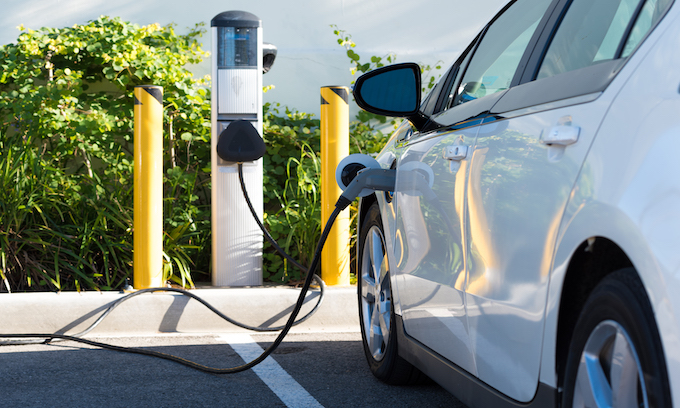Americans looking to purchase an electric vehicle (EV) could qualify for a tax credit of up to $7,500 in 2023 as part of the Biden administration’s push to ensure that half of all new vehicles sold in 2030 are electric or plug-in electric hybrids.
The tax credits were created as part of President Joe Biden’s Inflation Reduction Act, signed into law in August. The White House says EVs, which cost significantly more than traditional combustion engine vehicles, are better for the climate.
However, who exactly is entitled to receive the $7,500 in tax credit is rather complicated and depends on an array of factors, such as where the vehicles and the batteries used to power them are made, and the income of the buyers.
The credit of up to $7,500, which will be provided until 2032, will be offered to Americans who purchase certain new electric vehicles as well as some plug-in gas-electric hybrids and hydrogen fuel cell vehicles.
Those who opt to buy a used electric vehicle from dealers will receive a $4,000 tax credit, or 30 percent of the vehicle price, whichever is less.
What has been made clear so far is that Americans hoping to qualify for the tax credit will need to purchase new electric vehicles that are assembled in North America, meaning multiple models manufactured by Kia, Hyundai, and Audi, for example, won’t qualify.
Price Caps on Income
In addition, price caps will apply in an effort to disqualify buyers with higher incomes. Under those price caps, new single EV buyers must have an annual income of less than $150,000, although that rises to $225,000 for heads of household and $300,000 for married couples who file their taxes jointly, according to Edmunds.
Buyers purchasing used EVs, buyers must have an annual income of less than $75,000 if single, $150,000 if filing jointly as a married couple, and $112,500 if they are the head of a household.
Beginning in March 2023, the Department of the Treasury will issue further guidance governing battery minerals and components, according to NerdWallet.
Under the rules, at least 40 percent of the critical minerals used in the battery must be sourced from North America or a country with a U.S. free trade agreement or be recycled in North America, and cannot be from a “foreign entity of concern,” although that threshold will eventually rise to 80 percent in 2027.
Meanwhile, around 50 percent of the battery parts needed for the EV will have to be made or assembled in the United States or in any country that has a free-trade agreement with the United States, with this threshold eventually rising to 100 percent in 2029.
Battery-size requirements will also apply, according to CBS News.
Until the Treasury Department issues its guidance regarding battery minerals and components, however, those requirements will not apply, meaning eligible buyers will be able to get the full $7,500 tax incentive for qualifying models early in 2023.
EVs Still Too Expensive for Many
As for the cost of the EV, the Biden administration says that new electric sedans cannot cost more than $55,000, while pickup trucks, SUVs, and vans can’t be more than $80,000, meaning plenty of models, including those made by Tesla, will not be eligible, according to the White House.
The Department of Energy has released a list of car models that qualify for the credit.
To start with, the credit will be applied to a buyer’s 2023 tax return, which will be filed in 2024. That will change in 2024, when buyers will be able to simply transfer the EV credit directly to a vehicle dealer when purchasing the automobile.
According to Bloomberg, 85 percent of drivers in the United States cannot afford an EV.
Separate data from automotive research company Kelley Blue Book published this month found that new EV prices increased 2 percent from October to November, and are up 9 percent year over year, at an average cost of $65,041.
Meanwhile, the price of lithium-ion batteries—which are used in EVs—has jumped 7 percent year over year in 2022, according to a study from BloombergNEF, and is likely to rise again next year.
While large numbers of Americans cannot afford EVs, particularly amid the soaring cost of living, the White House says that EV sales in the United States have tripled since Biden took office.
However, the tax credits could create some issues.
Because some models are built in multiple locations, proving the sources of battery minerals and parts may also create problems for vehicle makers, which could in turn lead to difficulties when attempting to receive the tax credit.
The Department of Energy itself notes that many vehicles on its list of car models that qualify for the credit “may not meet the final assembly requirement in all circumstances.”



















ANd what’s the bet the COST of electric cars, goes up by DOUBLE that amount.